<> Graphium nomius (Esper, 1798) <>
the Spot Swordtail ผีเสื้อหางดาบลายจุด
Click on any photo to see all photos full size in Lightbox
Additions and corrections to the information provided on this page is always welcome. Please use the Contact form.

Photo taken at Sri Lanna National Park, Chiang Mai. Thailand. 420m a.s.l.

Graphium nomius is distributed across the northern part of the region with its southern extent being Cambodia. It is often common but can be quite localised. It is a beautiful and colourful butterfly, especially on the underside of its wings which is the view that we see most often. It only rarely basks with its wings wide open. There is no visual difference between the sexes but the female is significantly larger than the male.
It flies close to the ground in a swift and erratic manner. Both sexes visit flowers and the males are avid mud puddlers, usually singly but sometimes in large congregations. Like other Graphium species, nomius males adopt a filter-feeding technique, sucking up water through their proboscis, pumping it out through the anus, and then re-imbibing it. This enables them to extract dissolved minerals and prevents them from becoming dehydrated in the tropical heat. The species flies all year round and is multivoltine with several broods per annum.
Synonyms and previously used names: Papilio nomius, Papilio orestes, Papilio heroicus, Papilio niamus, Pathysa nomius
Taxonomy: Animalia - Arthropoda - Insecta - Lepidoptera - Papilionidae - Papilioninae - Graphium - nomius
Regional subspecies: G.nomius hainana (Hainan, China), G.nomius nomius (India, Bhutan), G.nomius swinhoei (NE India, Myanmar, Thailand, Laos, Cambodia, Vietnam)
Regional Distribution: India, Nepal, Bhutan, Bangladesh, Myanmar, Thailand, Laos, Cambodia, Vietnam, China
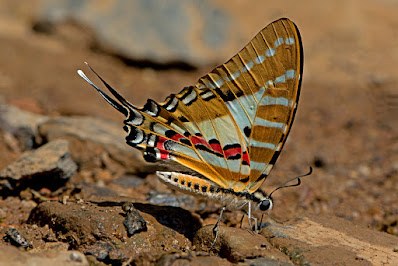 |
| Doi Suthep-Pui National Park, Chiang Mai, Thailand. 450m a.s.l. |
Habitat: Graphium nomius is found in moist deciduous and evergreen forest areas, amongst secondary growth and usually near streams. It prefers hilly areas up to around 1200m a.s.l but is occasionally seen at higher elevations up to 2000m.
Flight time: all year round, depending on location Wingspan: 65-85mm
Life History: egg 3-4 days instar 1 3-4 days instar 2 3-4 days instar 3 3-4 days instar 4 4-5 days instar 5 4-5 days pupa 9-12 days Total egg to adult 29-38 days. All times are approximate.
Larval Hosts: Huberantha cerasoides, Miliusa tomentosa, Miliusa velutina, Monoon longifolium (Annonaceae), Pandanus tectorius (Pandanaceae). Actual host plant used depends upon location and availabilty of plant species.
Adult Food Sources: Nectar - Gmelina arborea, Leucas aspera, Vitex negundo (Lamiaceae), Jasminum angustifolium (Oleaceae), Xenostegia tridentata (Convolvulaceae), Santalum album (Santalaceae), Nerium oleander, Wrightia tinctoria (Apocynaceae), Capparis spinosa, Cadaba fruticosa (Capparaceae), Hibiscus rosa-sinensis, Sida acuta, Sida cordifolia, Waltheria indica (Malvaceae), Cleome viscosa (Cleomaceae), Ziziphus mauritiana, Ziziphus oenopolia (Rhamnaceae), Rostellularia procumbens (Acanthaceae), Lagascea mollis (Asteraceae), Spermacoce hispida (Rubiaceae), Tribulus terrestris (Zygophyllaceae), Terminalia pallida (Combretaceae). Other - mud puddling, animal dung
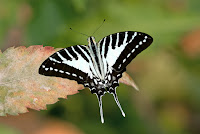 |
| Doi Suthep-Pui National Park, Chiang Mai, Thailand |
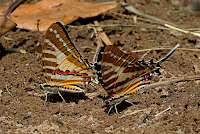 |
| Doi Suthep-Pui National Park, Chiang Mai, Thailand |
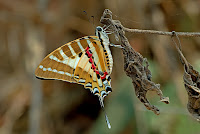 |
| Sri Lanna National Park, Chiang Mai, Thailand |
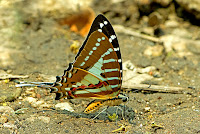 |
| Doi Suthep-Pui National Park, Chiang Mai, Thailand |
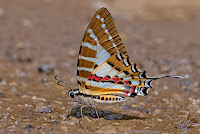 |
| Chiang Dao Nature Sanctuary, Chiang Mai, Thailand |
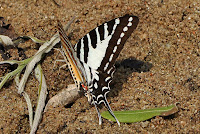 |
| Doi Suthep-Pui National Park, Chiang Mai, Thailand |
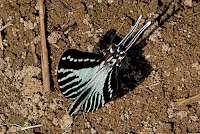 |
| Doi Suthep-Pui National Park, Chiang Mai, Thailand |
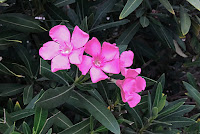 |
| Nerium oleander, a nectar source |
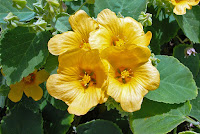 |
| Sida cordifolia, another nectar source |
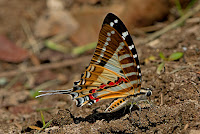 |
| Doi Suthep-Pui National Park, Chiang Mai, Thailand |
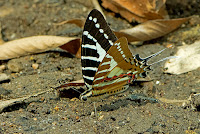 |
| Doi Suthep-Pui National Park, Chiang Mai, Thailand |
 |
| mature pupa shortly before eclosure |
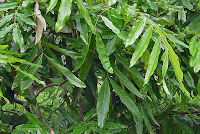 |
| Monoon longifolium, a larval host |
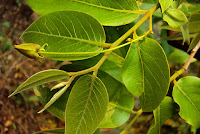 |
| Miliusa tomentosa, another larval host |
Links to other pages in this series for species in the same subfamily
Graphium nomius
Papilio agenor
Papilio helenus
Troides helena
